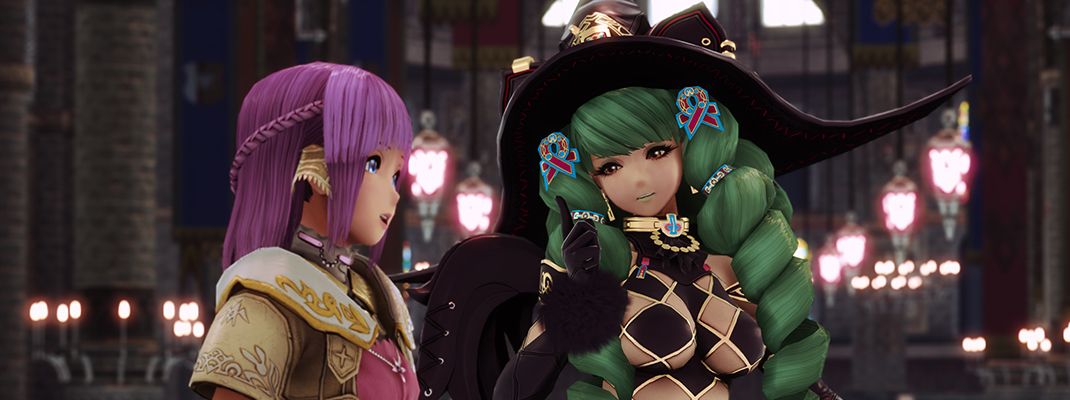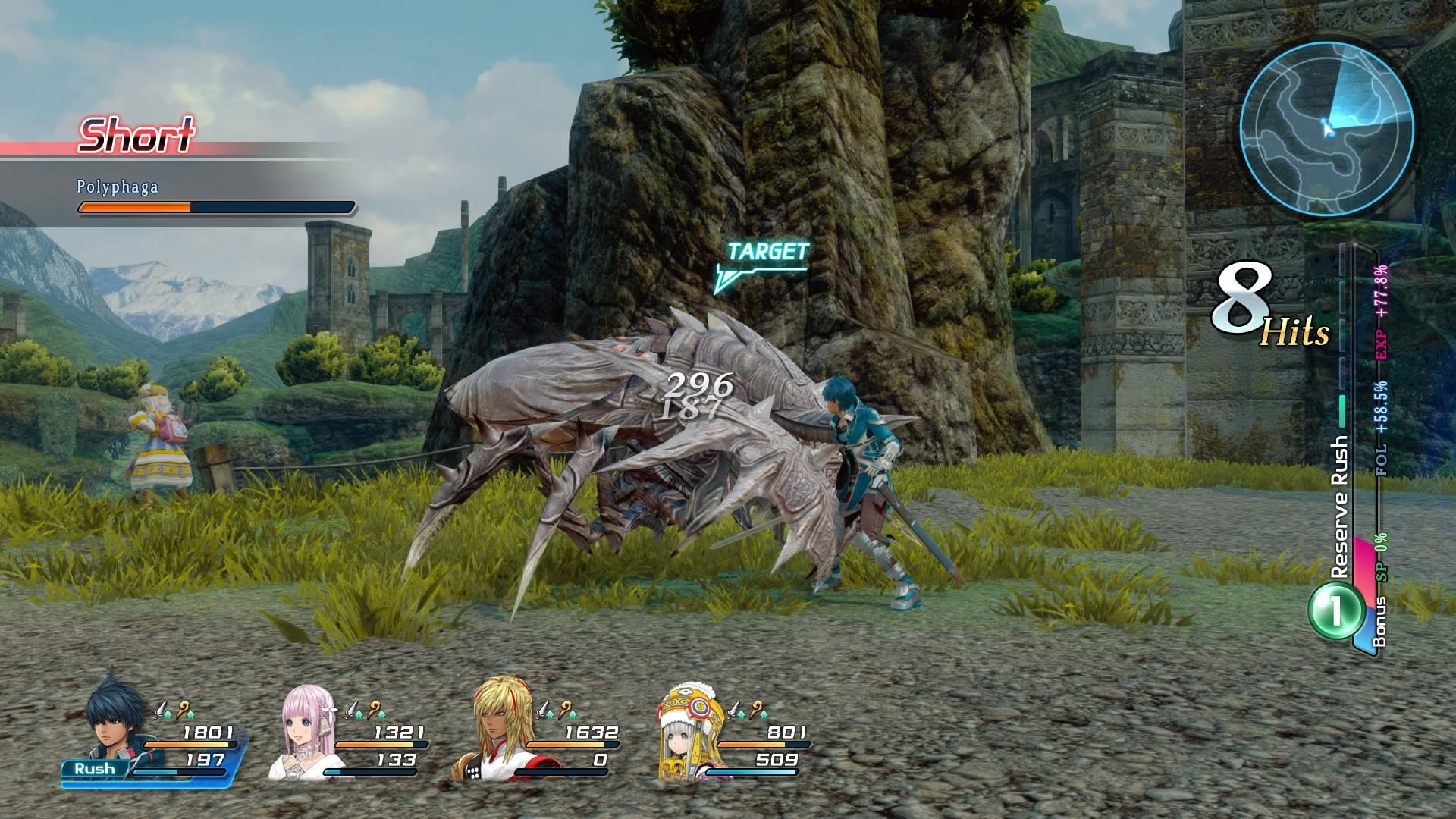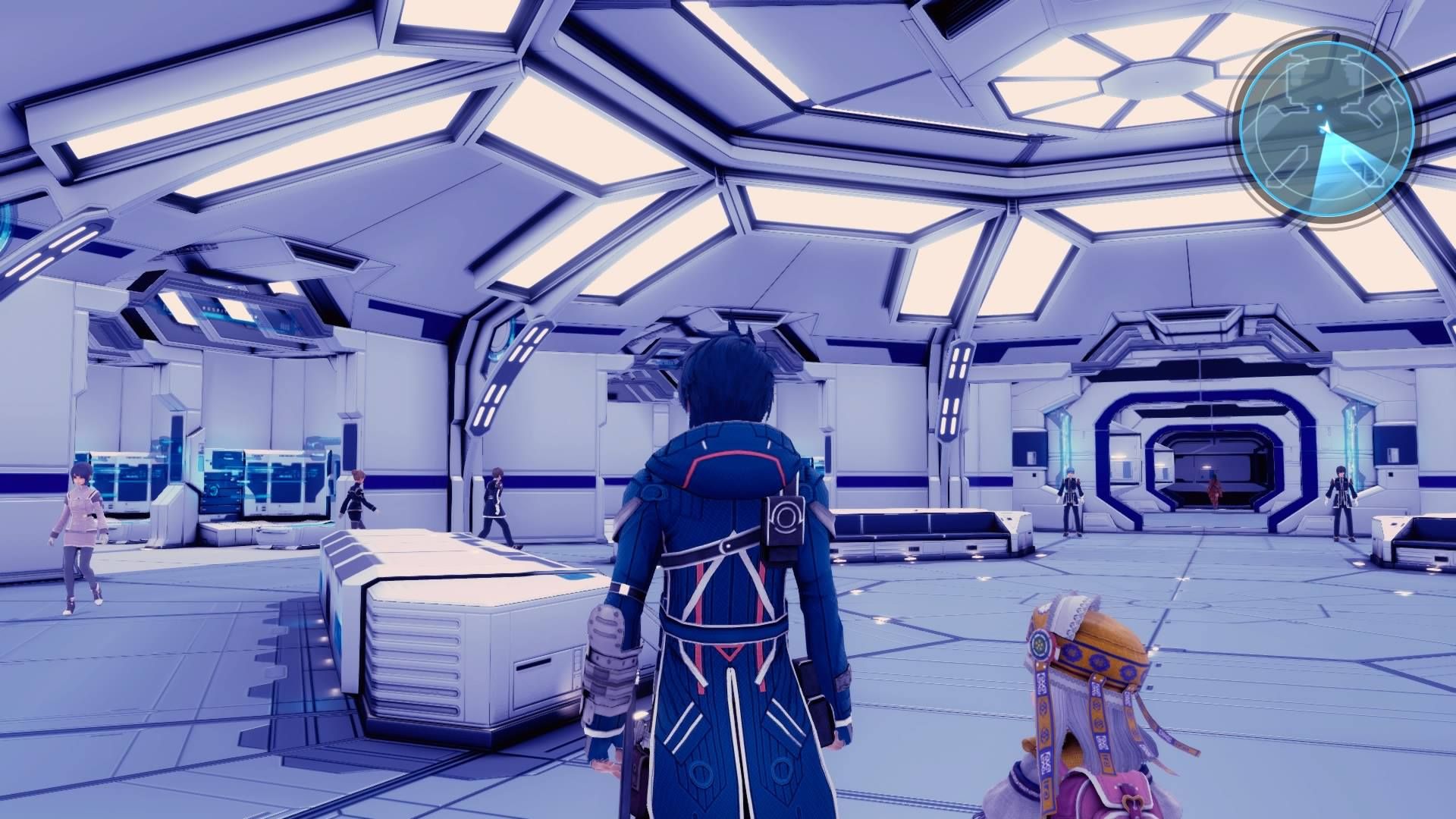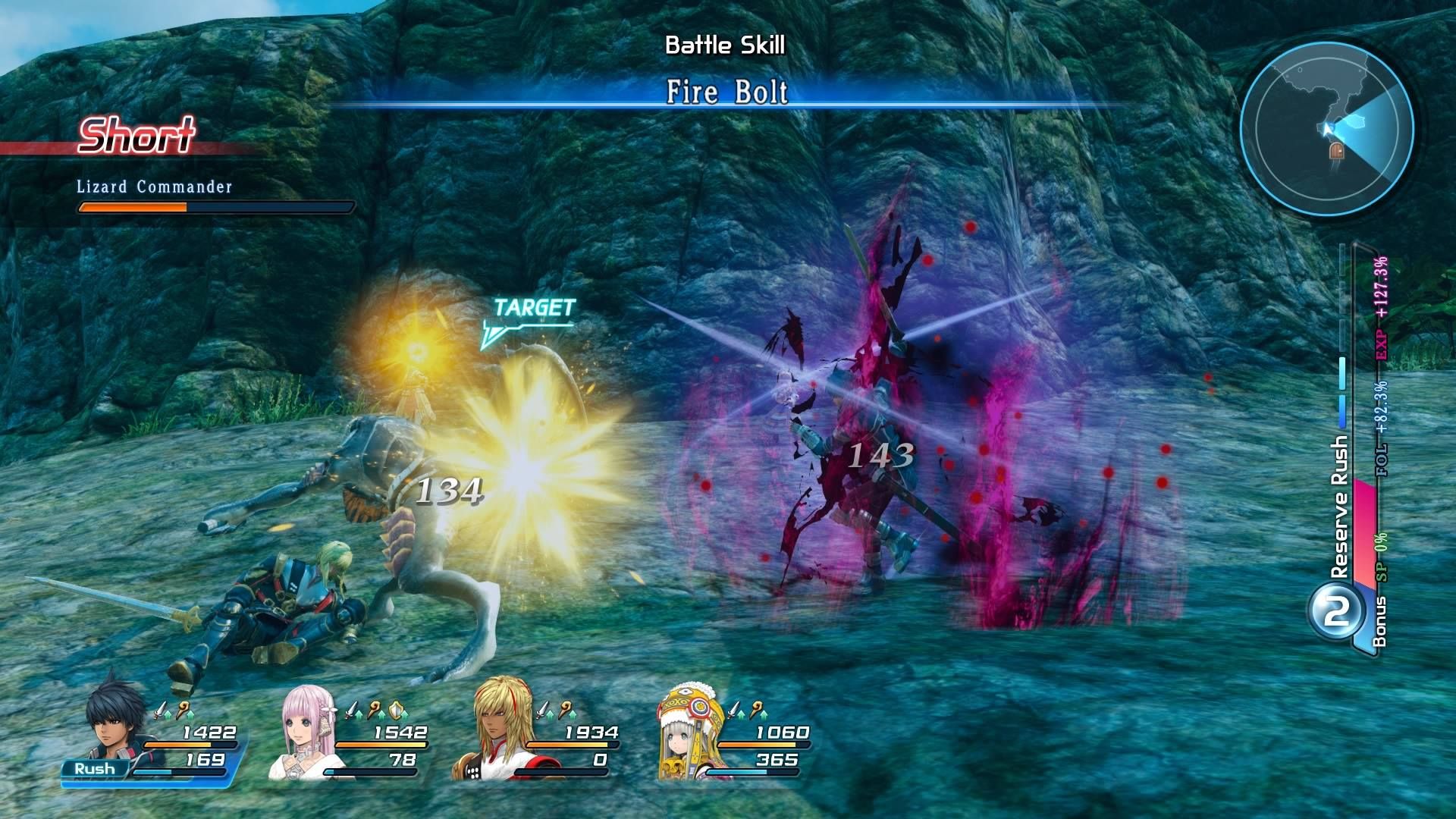Space, the final frontier. These are the voyages of Fidel and Miki, a swordsman and his signeturge childhood friend who wanted to help out in a war between nations in a medieval world yet somehow ended up on a starship in the middle of an interstellar conflict. This juxtaposition of a very advanced futuristic society with a world patterned after the middle ages is not only the setting for Star Ocean: Integrity and Faithlessness but also an adequate summary of what it tries to do as a game. Adequate is also not an inaccurate assessment of its success at doing so.
To summarize the plot while also intentionally remaining vague to not ruin the story for those who hate spoilers, the story begins with the player taking control of young swordsman Fidel Camuze. His village gets attacked, so after successfully repelling the enemy he and his friend Miki Sauvester venture forth to gain reinforcements for their village from the royal army. During the course of this journey they end up having an encounter with some individuals from a far away place none of them have ever heard of but can be viewed by looking at the lights in the sky. The scope of their adventure becomes much larger, and the sword and sorcery fantasy setting becomes infused science fiction, adding space ships, telecommunication devices, and other technological advances that may be influenced by Star Trek. How swords can go into battle against futuristic weaponry does require a certain degree of suspension of disbelief, but this is not the first game to pair such different levels of technology together.
The one foot in the past and one foot in the future dynamic in the setting also applies to the game design. Anyone who has played a JRPG will feel right at home in the newest Star Ocean. Fidel serves as the main protagonist, complete with a revolving door of party members that change as the story progresses. Some are warriors, some are spell casters, and they all have a role in battlefield as well as the advancement of the story. Also in typical JRPG fashion, each party member has a distinct appearance to separate them from the generic NPCs of the town. Fidel and Victor's character designs are fairly typical of what would be expected for heroic swordsmen. Miki's outfit was censored slightly for the localization in the US so her panties are no longer visible, though one would hope that no longer being able to look up her skirt isn't a deal breaker. What is really perplexing is that Miki's outfit received a slight alteration in the name of modesty, yet Fiore Burnelli, a woman possessing high status within the Royal Institute of Signetary Studies, is wearing a skin tight body stocking with a checkerboard pattern of bare flesh visible with a mini skirt that leaves nothing to the imagination with bat wings and a cattail attached. One would think someone of her status would be able to afford clothing that was not covered in holes. It is actually a nifty looking ensemble, though one has to wonder the logistics of putting the outfit on and not ripping it.
Combat is an area where a more modern approach is taken where entering battle is a seamless transition. For those that have played it, Dragon Age is a good reference point for how battle works in Star Ocean. However, this battle system works a bit better in Dragon Age. Ditching the archaic turn based system to fight random encounters, what we have here are visible enemies where battle is entered by walking near them. The battle system is genius in theory but the execution leaves something to be desired. Battles are fought in real time where one character is controlled by the player while the others act on AI. Characters can be switched on the fly using the directional buttons, making controlling all members of the party possible though not usually practical. Where this system falls apart is when there are six party members and it no longer resembles an RPG fight but it is more like a chaotic Sauper Smash Bros. Turbo Edition match. This can be problematic when you need to switch control over the character with the assigned healer role to manually heal the characters on death's door because she is too busy shooting fireballs. There is a role system where certain duties such as healer or berserker can be assigned, but that does not always mean the AI will do the most logical thing that role calls for. On the plus side, this system does lead to many quick battles, and this may be the only situation where achieving a ten second victory is something to brag about.
There are numerous different roles that can be obtained throughout the game and each character can have four roles equipped at a time. These roles alter certain attributes and influence character behavior in battle, but the AI does not always do what the player wants them to do. Obviously when there are multiple characters being used in a real time battle a certain amount of control needs to be relinquished to the AI system. About 75 perfect of the time the characters do what seems logical, but there have been a few battles that ended in defeat while the healer continues to play offense while the hit points plummet like it's October 29, 1929.
The visuals are another area where Star Ocean is split. To be fair, it was originally designed in Japan to be released for both the PS3 and PS4 it is not realistic to expect this to have graphics that push the limits of the PS4. A lot of environmental features, like the ocean and mountains, are beautiful and look like they were built for this console. The characters, while the design concepts for each of them are interesting, do look like they just came from a PS3 game. They do not look bad per se, the only negative that can be said is some of the characters' hair looks like it is made of play-doh, but the anime inspired character models look out of place against most of the backgrounds. The soundtrack on the other hand is one of the highlights of Star Ocean.
The campaign is on the shorter side for a JRPG, which makes it surprisingly short for a Star Ocean game. Depending on personal preference makes this either good or bad. Personally, thirty to forty hours seems like the sweet spot for RPGs and this can be done in a little under thirty. It doesn't overstay its welcome, but doesn't feel like a half finished game. Most of the game is traveling on foot between a handful of major locations. There is a certain amount of backtracking down throughout the campaign, but being able to see enemies on the field makes it possible to avoid unwanted battles. There is more than one ending available so there is incentive to complete optional activities with party members and to hunt for the secret dungeons.
Closing Comments:
Star Ocean: Integrity and Faithlessness is essentially JRPG comfort food. Die hard Star Ocean and JRPG fans will most likely enjoy this title, but it does play like a paint by numbers JRPG. The story is unique but formulaic and those that have familiarized themselves with JRPGs over the past twenty years will likely be able to predict what happens as it progresses. The lack of a save anywhere feature is one point of contention as looking for a save point to be able to stop playing was always an annoyance with this genre. Many games have gotten away from this practice but unfortunately that is a relic this title clings to. There are some good ideas shown but for many the execution is not quite where it should be. For example, the attempt at active time battle is very well done during the parts where the party is two or three members; when it gets larger than that the best strategy seems to button mash as Fidel and hope the battle ends before your party members' poor choices bring upon defeat. Despite its shortcomings, it's enjoyable, but only for hardcore JRPG fans.




